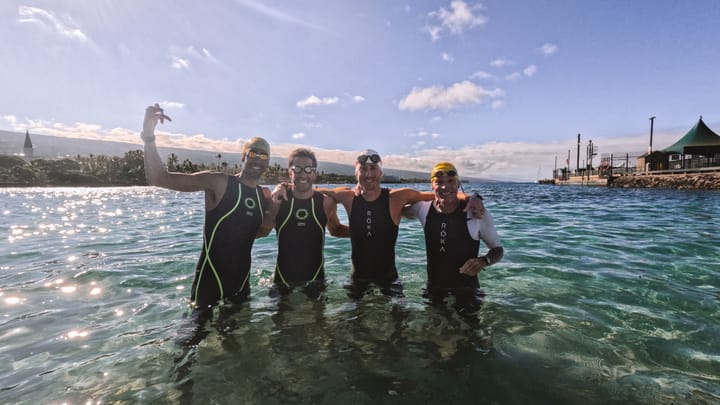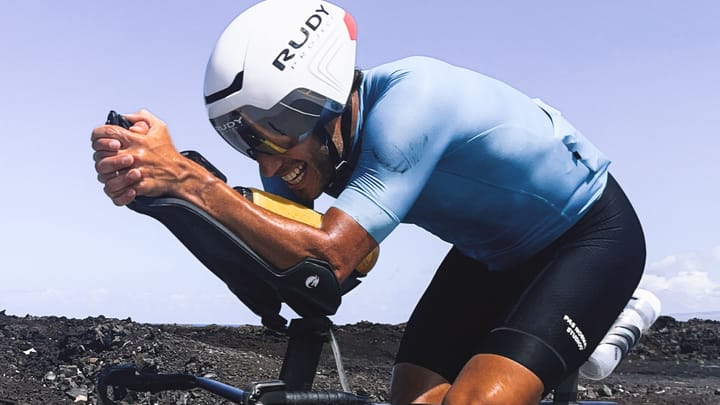5 Running Drills for Triathletes
Professional triathlete shares the top five running drills honed over eight years, emphasising technique over speed for maximum efficiency in performance.

Running drills have created a lot of debate within both the running and triathlon communities. There are lots of arguments for and against doing running drills as well as questions as to when is the most effective time during your session to do them. I have been lucky to have worked with some of the best run-specific coaches and have also tried and tested more running drills than I can remember over the last eight years as a professional triathlete.
After carefully reviewing and going through my training diary, I’ve narrowed the list down to just five run drills that are the most relevant to triathletes, but, trust me, this has not been easy. By far the most important thing, no matter what running drills you do, is the mental approach and application. Holding good form and doing the drill properly is the number one priority. There is really no point in doing run drills at all if you cannot hold form and recruit the correct muscle groups. I like to do my run drills at the halfway point of my easy aerobic run sessions or just before any hard run efforts. I find that this helps me to first warm up before I start my drills as well as helping me to refocus on my run form for the last half of my run session or before any high-intensity run sessions.
Skipping
Skipping is by far the most important run drill you can do as it helps to promote that bouncy feeling you get when you are running well. It also assists in giving you a faster reaction time once your foot hits the ground. The faster your foot makes contact with the ground and propels you forward, the more efficiently you will run. While skipping over a 20-metre distance, remember that you’re looking for fast contact time with the ground while keeping a small forward lean and are using your arms to help propel you forward. Don’t feel like you have to move forward at pace, as slower, in this case, is better.
High knee drill
Generally, after dismounting from their bikes, triathletes tend to be quite tight and sore when heading out onto the run. As a result, many triathletes’ knee lifts are compromised, which results in a shorter stride and less efficient running form. This drill promotes a high knee lift and good arm drive while opening up your hip angle. I tend to do this drill on a small incline as this helps me work on getting a good forward lean into the hill. It is important to have this forward lean and not arch yourself backwards, which can be common. It is also important not to move forward too quickly. As a guide, a 10-metre distance for this drill should take around 25 seconds to complete.
Bum kicks
This drill works on the same principle as the high knee drill and helps you to avoid what many like to call the ‘ironman shuffle’ running form. This drill will ensure that you have a good rear leg lift and are getting the most out of your foot’s final push up from the ground. Hold the same posture as the high knee drill and keep a good forward body lean and arm drive.
Over a distance of around 15 metres, increase your speed from a walking pace up to a slow jog.
Forward Lean
A good forward lean is important for any triathlete, as it is really the most efficient way to run. This drill is something I learnt from run guru Bobby McGee, who has worked with the world’s best triathletes and runners and is known around the world for this amazing insight into running. The first part of this drill is done with your hands against a solid object such as a wall or light post. Step back so that you have a good lean against the object of your choice with your arms extended horizontally against the aforementioned object. For 15 seconds, run on the spot, concentrating on a few degrees of forward lean, trying hard to keep your hips level and head straight. Once this initial stage of the drill has been mastered, use a rubber stretch band around a solid post so that you can use your arms to create more of a drive forward. Alternatively, you can have a person holding the band who is slowly walking behind you, controlling your pace.
Strides
Personally, I always do strides as my final drill. The body should be nice and warmed up and the run-specific muscle groups stretched and primed to go. Essentially you are putting together all of your drills into a short but solid build effort. The aim of strides is to get to your maximum speed over a 50-metre distance holding good run technique. Therefore it is important to start slowly and build consistently to your maximum speed. The final five-to-10 metres should be at your maximum pace and then reduce your effort by slowly decreasing speed over the next 10 meters or so, ending at walking pace. It is important not to stop suddenly after reaching your maximum speed as this can result in jarring and injuring muscles.
The key take-home point with running drills is that mental application is everything. Holding good form and technique is the name of the game, not speed.
It is important to stay controlled and relaxed and keep the head switched on.
Until next time, happy training and racing.





Comments ()